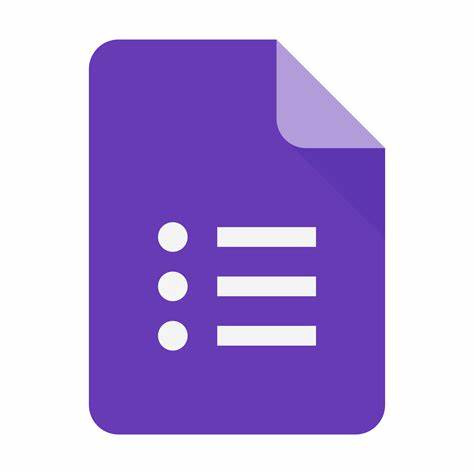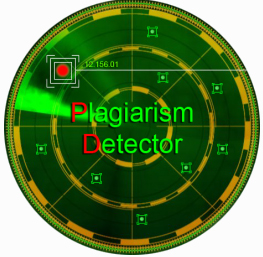SISTEM INFORMASI PADA AIESEC LAMPUNG BERBASIS WEB
Abstract
AIESEC is an international organization for youth to develop their leadership potential. AIESEC is the largest student-driven organization in the world. An organization that focuses on developing youth leadership and serving as ambassadors abroad to carry out social projects. AIESEC also focuses on leadership development, leadership experience, and participation in the Global Learning Environment. This research produces an interface to facilitate AIESEC Lampung projects. This system was a facility for organizations to replace systems that used manual recording and resulting in a lack of time efficiency. This system integrates data ranging from report data and transactions that had been stored in the database. The new system was designed using the RAD (Rapid Application Development) method. It was a linear sequential software development process that emphasized the development cycle in a short time iteratively (repetitively) in developing a system. A working model of the system was constructed in the early stages of development in defining the user requirements. With an integrated web-based computerized system, problems in transaction services at AIESEC Lampung can be solved easily. Reports and all transactions was displayed in the system. This research produced an Information System at AIESEC Lampung to carry out projects, namely the registration process and the host family program.
Keyword: Information Systems, AIESEC, RUP, Web.
Full Text:
PDFReferences
K. Schwab, Revolusi Industri Keempat. PT Gramedia Pustaka Utama, 2019.
R. A. Wahab, “Analisis Perkembangan Internet Broadband di Wilayah Perbatasan Provinsi Sulawesi Utara,” urnal Penelit. Pos Dan Inform., vol. 6, no. 2, pp. 201–226, 2016.
M. Prihatini and A. Muhid, “Literasi Digital terhadap Perilaku Penggunaan Internet Berkonten Islam di Kalangan Remaja Muslim Kota,” J. An-Nafs, pp. 23–40, 2021.
J. A. Bargh and K. Y. A. McKenna, “The internet and social life,” Annu. Rev. Psychol., vol. 55, pp. 573–590, 2004.
P. A. Sulistiyo and E. S. Wahyuni, “Socio-economic impacts by the internet usage of teenagers in villages,” Sodality J. Sosiol. Pedesaan, vol. 6, no. 1, 2012.
R. Katz, “Social and economic impact of digital transformation on the economy,” in International Telecommunications Union, 2017, p. 41.
A. A. K. S. Putri, “Analisis pengaruh sikap generasi milineal terhadap minat beli online pada [1] K. Schwab, Revolusi Industri Keempat. PT Gramedia Pustaka Utama, 2019.
R. A. Wahab, “Analisis Perkembangan Internet Broadband di Wilayah Perbatasan Provinsi Sulawesi Utara,” urnal Penelit. Pos Dan Inform., vol. 6, no. 2, pp. 201–226, 2016.
M. Prihatini and A. Muhid, “Literasi Digital terhadap Perilaku Penggunaan Internet Berkonten Islam di Kalangan Remaja Muslim Kota,” J. An-Nafs, pp. 23–40, 2021.
J. A. Bargh and K. Y. A. McKenna, “The internet and social life,” Annu. Rev. Psychol., vol. 55, pp. 573–590, 2004.
P. A. Sulistiyo and E. S. Wahyuni, “Socio-economic impacts by the internet usage of teenagers in villages,” Sodality J. Sosiol. Pedesaan, vol. 6, no. 1, 2012.
R. Katz, “Social and economic impact of digital transformation on the economy,” in International Telecommunications Union, 2017, p. 41.
A. A. K. S. Putri, “Analisis pengaruh sikap generasi milineal terhadap minat beli online pada situs jejaring sosial,” Universitas Islam Indonesia, 2018.
and R. D. D. Winarso, S. Syahril, A. Aryanto, E. Arribe, “Pemanfaatan Internet Sehat Menuju Kehidupan Berkemajuan,” J. Pengabdi. UntukMu NegeRI, vol. 1, no. 1, pp. 19–23, 2017, doi: 10.37859/jpumri.v1i1.29.
D. Maharani, F. Helmiah, and N. Rahmadani, “Penyuluhan Manfaat Menggunakan Internet dan Website Pada Masa Pandemi Covid-19,” J. Pengabdi. Masy. Inform. ABDIFORMATIKA, vol. 1, no. 1, pp. 1–7, 2021.
B. Tas and A. Oztosun, “Predictability of Internet Addiction with Adolescent Perception of Social Support and Ostracism Experiences,” Turkish Online J. Educ. Technol., vol. 17, no. 4, pp. 32–41, 2018.
L. Fahmawati and I. Imarshan, “Fungsi Komunikasi Organisasi Internal Selama Pandemi Covid-19 : Studi Kasus di Organisasi Pendidikan,” J. Pendidik. Edumaspul, vol. 5, no. 2, pp. 414–423, 2021.
H. Safri, “Manajemen dan Organisasi dalam Pandangan Islam,” Kelola J. Islam. Educ. Manag., vol. 2, no. 2, pp. 154–166, 2017, doi: 10.24256/kelola.v2i2.437.
M. A. Firmansyah, KOMUNIKASI PEMASARAN. CV. PENERBIT QIARA MEDIA, 2020.
M. Makbul, “METODE PENGUMPULAN DATA DAN INSTRUMEN PENELITIAN,” 2021, [Online]. Available: https://osf.io/svu73.
S. E. Zaluchu, “Metode Penelitian di dalam Manuskrip Jurnal Ilmiah Keagamaan,” J. Teol. Ber. Hidup, vol. 3, no. 2, pp. 249–266, 2021.
T. Wahyuningrum and D. Januarita, “Perancangan Web e-Commerce dengan Metode Rapid Application Development (RAD) untuk Produk Unggulan Desa,” in SEMINAR NASIONAL TEKNOLOGI INFORMASI & KOMUNIKASI TERAPAN (SEMANTIK), 2014, no. November, pp. 81–88.
A. Salim, J. Jefi, B. O. Lubis, J. Atmaja, and F. W. Fibriany, “Perancangan Sistem Informasi Layanan Umroh Pada Pt. Galang Saudi Tourism Jakarta Berbasis Website,” Bina Insa. Ict J., vol. 8, no. 1, pp. 1–11, 2021
DOI: https://doi.org/10.33365/jti.v16i1.1552
Refbacks
- There are currently no refbacks.
Copyright (c) 2022 Neni Purwati, Inas Yuni Tsamarah

This work is licensed under a Creative Commons Attribution-ShareAlike 4.0 International License.
JURNAL TEKNOINFO
Published by Universitas Teknokrat Indonesia
Organized by Prodi S1 Informatika FTIK Universitas Teknokrat Indonesia
W: http://ejurnal.teknokrat.ac.id/index.php/teknoinfo/index
E : teknoinfo@teknokrat.ac.id.
Jl. Zainal Abidin Pagaralam, No.9-11, Labuhan Ratu, Bandarlampung

This work is licensed under a Creative Commons Attribution-ShareAlike 4.0 International License.
Jumlah Pengunjung : View Teknoinfo StatsCounter



















